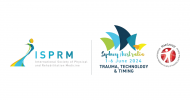Session outline
The amputee population worldwide is rising at an alarming rate with increasing incidence of, trauma and diabetes in particular. Eighty percent of this population lives in low & middle- income countries. Ironically, most research in prostheses is directed towards addressing the needs of the 20% living in the developed world. These designs are expensive and beyond the reach of the large majority. To address the needs of Indian amputees, the Jaipur Limb technology was developed in India commencing in the 1960s. The technology has stood the test of time and has found application across the developing world.
At the same time developed countries like Australia are trying to imitate the amputated limb including more comfort, cosmesis and function into the newer designs. This has led to socket designs which are more comfortable e.g., gel liners and infinitely adjustable socket designs, foot componentry which can imitate a natural foot allowing dynamic movement on different terrains and slopes e.g. rush foot, proflex and a running foot e.g. flex foot. These high-tech prosthetic limbs are usually available to the majority in Australia.
The choice of prosthesis is guided by several factors including patient’s age and comorbidities, cause of amputation and environmental factors, available technology and technical supports, cost and maintenance of the device. Challenges from financial limitations are more pronounced in the developing countries where funding models are based on personal finances or availability of low-cost options and supportive NGOs. The demographics of low and middle – income countries creates a patient profile vastly different from high-income countries. Therefore, designs and delivery models must be tailored to address these unique requirements.
In the majority of countries, amputee rehabilitation is a multidisciplinary service where the multidisciplinary (MDT) team focuses on optimizing functional abilities and creates a customized treatment plan. Rehabilitation Physicians focus on optimizing and restoring health and preventing medical complications after amputation. Rehabilitation Physicians from both India and Australia will be providing insight into how to manage amputee patients and how to lead the MDT team.
Prosthetists are professionals involved in the assessment, prescription, manufacture, fitting and maintenance of prosthetic devices. The prosthetist is an integral part of the multidisciplinary rehabilitation team, helping to prevent or correct deformity and prevent injury, keeping the patient as mobile as possible to ensure they can live life to their fullest potential. The prosthetist will be showcasing a range of prostheses for transtibial amputation from the Jaipur foot to the Proprio microprocessor foot with a focus on what prosthetic design is fit for whom. There will be virtual demonstrations on the manufacturing of the Jaipur foot as a low-cost option and discussion on the fitting of this prosthesis for our Asia-Oceania belt.
Amputee gait retraining is crucial to achieving optimal mobility which underpins community reintegration and functional independence. The Physiotherapist will discuss the principles and practice of amputee specific physiotherapy.
There will be case studies and live demonstrations to allow showcasing of the different prosthetic designs followed by a live Q&A session.
Learning outcomes
- This session will give the audience a bird’s eye view of the prosthetic options at a global level to allow future collaborations with our neighbouring Asia/Oceania countries.
- It will also allow the audience to grasp the principles of prosthetic device prescription, dispensing and training and understand which prosthesis for whom, when and how.
- You will learn how a low-cost prosthetic foot, known as the Jaipur Foot, a non-articulated foot, provides mobility in all planes and it allows users to negotiate uneven terrain, sit on the floor, walk barefoot, ride a bicycle, swim, climb trees etc
- You will learn the difference in patient profile and outcomes in patients who receives prosthetic limb from a developing country to a developed country and it’s not just the cost but the person who receives it.
- The importance of multidisciplinary team’s role is critical in not just prescription but training and maintenance.
Target audience
Allied health, Prosthetist, Medical Practitioners, Students, Trainees, Nursing Staff and General Public will benefit, Persons with amputations and Policy makers.



